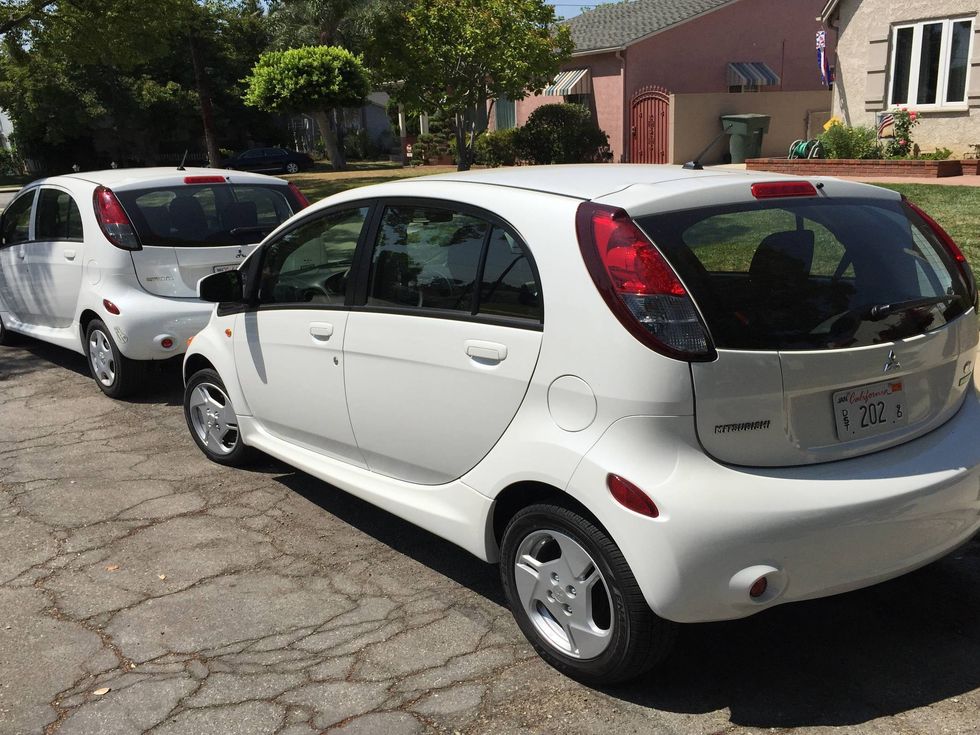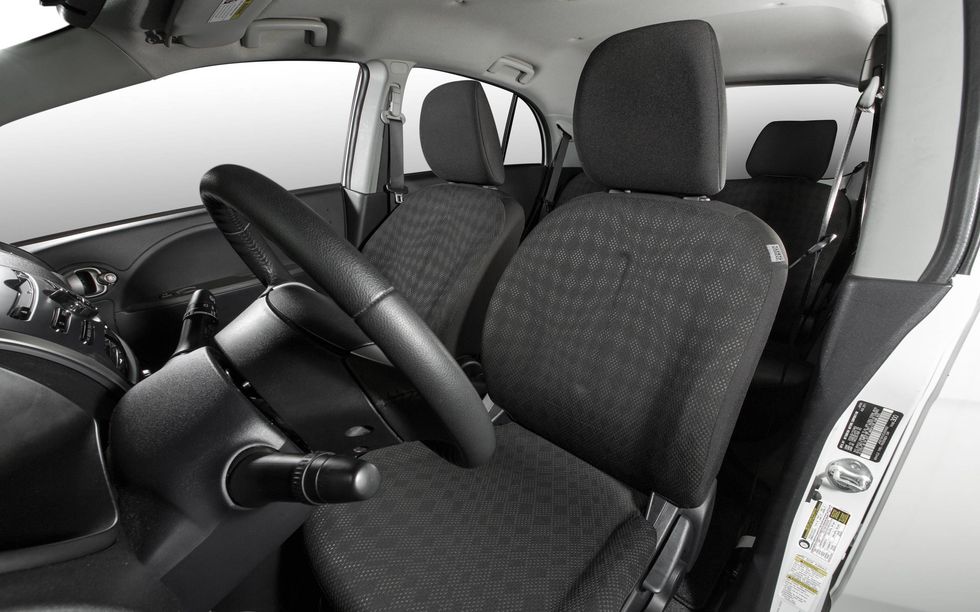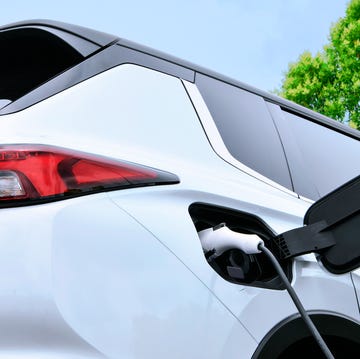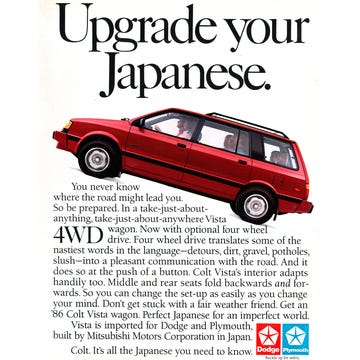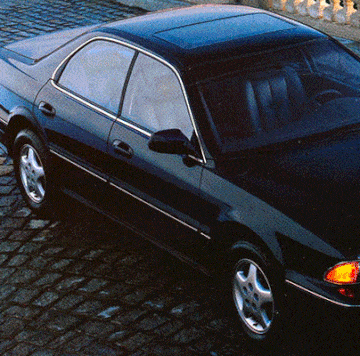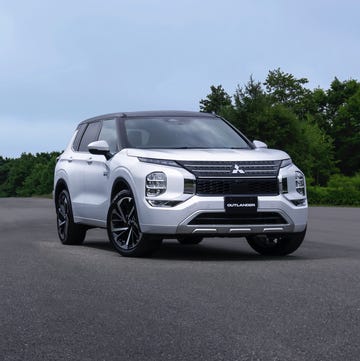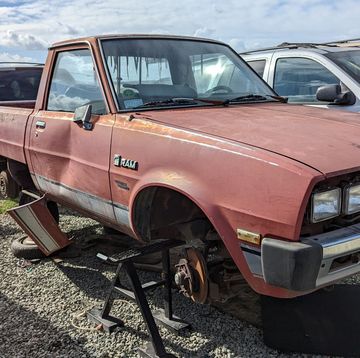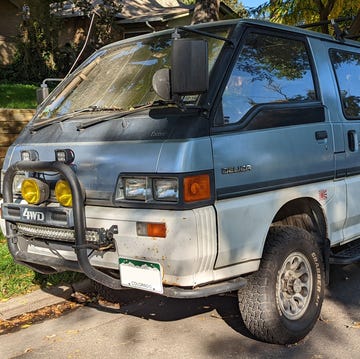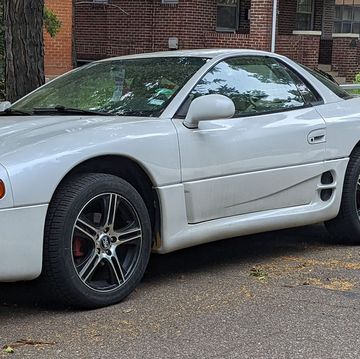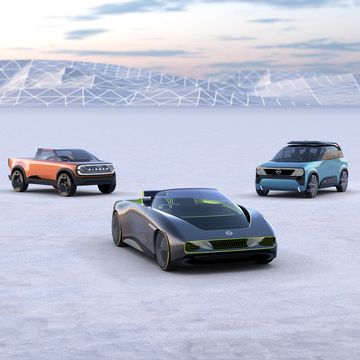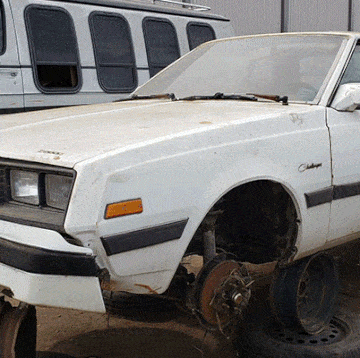It is the worst-selling car in America and has been for as long as it’s been on the market. While Toyota sells almost half a million Camrys every year, Mitsubishi struggles to break triple digits with its iMiEV. So far in 2016 it has sold – brace yerself Bridget – 40 of them. Yet there it sits, forever on the lots, forlorn, poorly reviewed, gathering lot dirt like a static-clinging cardust cloth, unwanted, unloved and alone, present only because of California’s market-manipulating Zero-Emission Vehicle requirement which says manufacturers have to sell a certain percentage of ZEVs if they want to sell other, more profitable vehicles.
Looking at it from that point of view, the Mitsubishi iMiEV is ridiculous.
And yet, I love it. That’s right, I said it. Me, who today was driving a 450-hp Eleanor Mustang, who just two days ago was driving (I am not making this up) a 1968 Shelby Cobra GT500 KR with the 428 and a four on the floor. Me, the very same dope who only a short while before that was flying along in a McLaren 570GT. Me who… “Awright,” you’re thinkin’, “Quit yer yappin’ and get to the point already!”
I, like any red-blooded American knuckle-dragger, appreciate horsepower and torque and muscle-squealin’ tires. But the little engineer who lives inside my head, the one who, unlike me, can do math, appreciates the efficiency of the Mitsubishi iMiEV. Go ahead, say I’m a tree-huggin’ communist and why don’t I just go back to where I come from, inneeways? Okay, I will, but first, hear me out.
The iMiEV has only 16 kWh of batteries, making it the lightest and cheapest electric car on the market. I think they should offer one with an 8 kWh battery for half the price, because an awful lot of people don’t really drive that far every day (go ahead and write down how many actual miles you drive every day, you’ll be surprised). Range with 16 kWh was 62 miles when it was new (more on that in a minute). Right now sticker on one of these is just under $24,000 – with Federal and California State rebates that drops by 10 grand. So it’s a $14,000 car that needs no maintenance and will never wear out! I power mine with solar panels on the roof of my house, which means electricity is free, or a lot cheaper than gas, depending on how much gas costs any given week.
The iMiEV has room for four full-sized, even large, adults, and room for groceries behind them. Fold the rear seats flat and you can, and I have, loaded a bicycle in back. It is the perfect urban and suburban transportation vehicle for the typical family where one spouse commutes every day and the other takes care of household duties. And it meets all applicable Federal standards for safety, so it’s not a death trap.
And yet, no one cares. “What if I have to drive to Vegas all of a sudden,” they say. “What if there’s an emerrrrrgency?” “What if I’m attacked by giant squids?” Well, the fact of the matter is you’re not going to be attacked by giant squids ad when was the last time you faced an emergency in Vegas? Write down the number of miles you actually drive in a week. Unless you’re some ultra-commuter, chances are it’s less than 62 miles a day. And if it’s longer, and you can plug in at work, this could still be your car.
A couple notes about the difference between the new press car iMiEV and the one I’ve owned for five years, the one with 38,744 miles. For one, the new car is much, much cleaner. I think the reason most people buy new cars is because they couldn’t stand the mess in their old cars. But the big question is: How much did the battery wear out? Back when we had web commenters at Autoweek dot com, one guy actually claimed I would “…have to buy a new battery at 5000 miles.” Who was this guy and where is he now? I did not have to buy a new battery and the old battery lost only about 10 or maybe 20 percent of its ability to hold a charge.
To wit: I got in the new iMiEV and enlisted another driver to follow me in the old iMiEV at the same rate of speed and with both of us blasting max A/C the whole way. We drove from the massive Autoweek West Coast office to the fabulous Autobooks/Aerobooks bookstore in Burbank, a round trip journey of 36.6 miles. It took the new car 10 kWh to make that journey and the old car 12 kWh. But the old car had replacement rear tires that were 10 mm wider than the original equipment tires; the new tires were 185s while the OEs were 175s. Plus, the alignment might have been a little outta whack. So I’m going to blame only 10 percent of the difference on the battery and the rest on the tires and alignment.
Regardless, the car is still perfectly fine. Just the other day I took the original iMiEV out and got an extrapolated range of 62 miles, the exact same as the claimed range when new. I took the new iMiEV on another run of 52.4 miles and it used up 12 kWh -- 31 miles of that was regular freeway driving with the A/C off and the rest was stop-and-go traffic with the A/C on.
So if you lose ten or 20 percent every five years and 40,000 miles, you don’t necessarily have to worry about the battery that much; rather than replace it you can get it reconditioned, a process wherein they just replace the individual cells that are waning instead of the whole thing. Also, if your daily drive is within the remaining range of the aging battery, you still have a fully useable car. Even when you decide to swap out the battery, one plan could be to use the old battery as a household battery, charged up by solar cells during the day and discharged when you get home at night.
So would I still buy the iMiEV now, knowing what I do after almost five years of ownership? Yes. Now if just more than a handful of others would do the same, maybe Mitsubishi will make enough money to build another Evo.
Vehicle Model Information
ON SALE: Now and forever
BASE PRICE: $23,845
AS TESTED PRICE: $13,845
POWERTRAIN: AC synchronous permanent magnetic motor, Single speed, Fixed reduction gear
OUTPUT: 66 hp (49Kw) @ 3000~6000; 145 lb-ft (196 Nm) @ 0~3000
CURB WEIGHT: 2,579 lbs
0-60 MPH: 13 seconds (est)
FUEL ECONOMY: City (MPGe) 126 Highway (MPGe) 99 Combined (MPGe) 112 Range Combined (EPA 5-cycle - official) 62 Miles Range City (EPA LA4 cycle) 98 Miles
FUEL ECONOMY: 69 miles range with A/C on
PROS: Costs almost nothing, lasts forever
CONS: You won't look cool, except to science geeks and Mitsubishi employees

